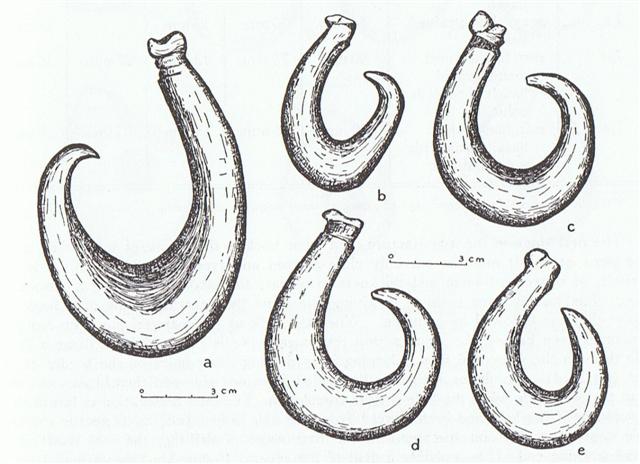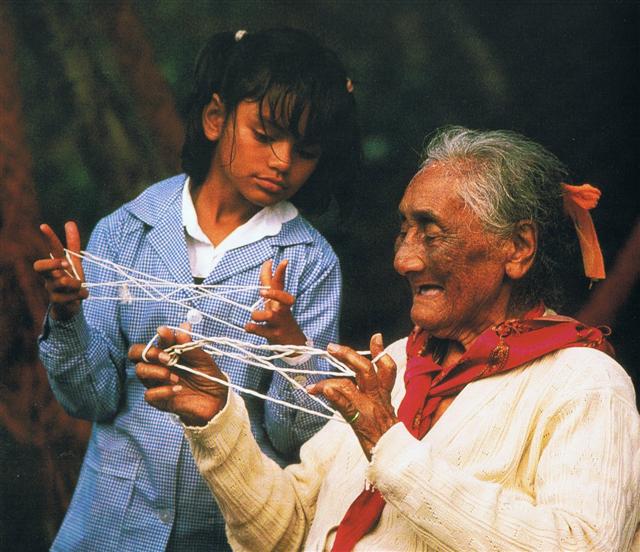So far so good:
Then we ought to continue by also correcting my previous description of the glyphs around the March equinox - because all star positions beyond that of Matar (in the first of the pair of days February 28) are out of phase with 1 day:
It is interesting to find te maitaki (with a dot in front) in Cb7-11, which now will coincide with 0h (because 547 - 182 = 365):
Cb7-11 could represent an equinox, with a pair of great mata (halfyears) joined together. September 18 (261 in a normal year) + 184 = 445 and 445 - 80 = 365. But day 445 is not March 21. This came as a surprise. There are 19 glyphs from Cb6-21 (528) to Cb7-11 (547). Therefore the number of RA days should also be 19 (and 365.25 - 346 = 19.25). Order can be reestablished only by changing the date at Cb7-11 from March 20 (445) to March 21 (445) - because February 29 should not be counted in the Gregorian calendar:
The glyph at September 23 (266 = 366 - 100) appears to have been designed to allude to a great fish-hook, but it is not a Sign of 'fishing up land' because when the Phoenix leaders (Ankaa, α, and κ) rose together with the Sun in March 26 it meant the opposite south of the equator, when instead the Dark Raven took command.
The 'fish-hook' in Cb7-16 does not allow any light to come in from the front side, because the side of light from the Sun was at the back side (in the past), and close by the Full Moon was now Raven. My assumption of a double February 28 means the year was not 365 but 366 days long. As a consequence the date where there were 100 days left of the year would appear to be September 23 instead of September 22 - because there is so far in my presentations no double February 28 in the top row, only in the bottom part of my presentation. However, this is only a consequence of my model - because each year when February 28 had been counted twice September 22 would be day number 366 - 100. Septemberr 23 (266) + 184 = 450 = 85 (March 26) + 365. 85 (March 26) - 80 (March 21) = RA day 5 (Ankaa and κ Phoenicis). 266 (September 23) - 80 (March 21) = RA day 186 (Zaniah, η Virginis). ... 'In China it [η] was Tso Chih Fa, the Left-hand Maintainer of Law. It lies on the left side of the Virgin, and just to the westward is the point of the autumnal equinox which the Chinese knew as Yih Mun, Twan Mun, or Tien Mun, Heavens Gate. With ζ it almost exactly marks the line of the celestial equator.'
Threads should not be played with when Sun was on his way up and still close to the horizon. However, this could not have been the message from Zaniah to the Easter Islanders when the star was seen close to the Full Moon in late March: ... string games could be resumed after it was clear that the Sun had managed to leave the horizon and was rapidly gaining in altitude: 'Before the sun starts to leave the horizon ... when it shows only on the horizon, ... then string games were no longer allowed as they might lacerate the sun. Once the sun had started to go higher and could be seen in its entirety, string games could be resumed, if one so wished. So the restriction on playing string games was only applicable during the period between the sun's return and its rising fully above the horizon ... Instead the star should have been a Sign telling of the arrival of the season for kaikai:
| ||||||||||||||||||||||||||||||||||||||||||||||||||||||||||||||||||||||||||||||||||||||||||||||||||||||||||||||||||||||||||||||||||||||||||||||||||||||||||||||||||||||||||||||||||||||||||||||||||




